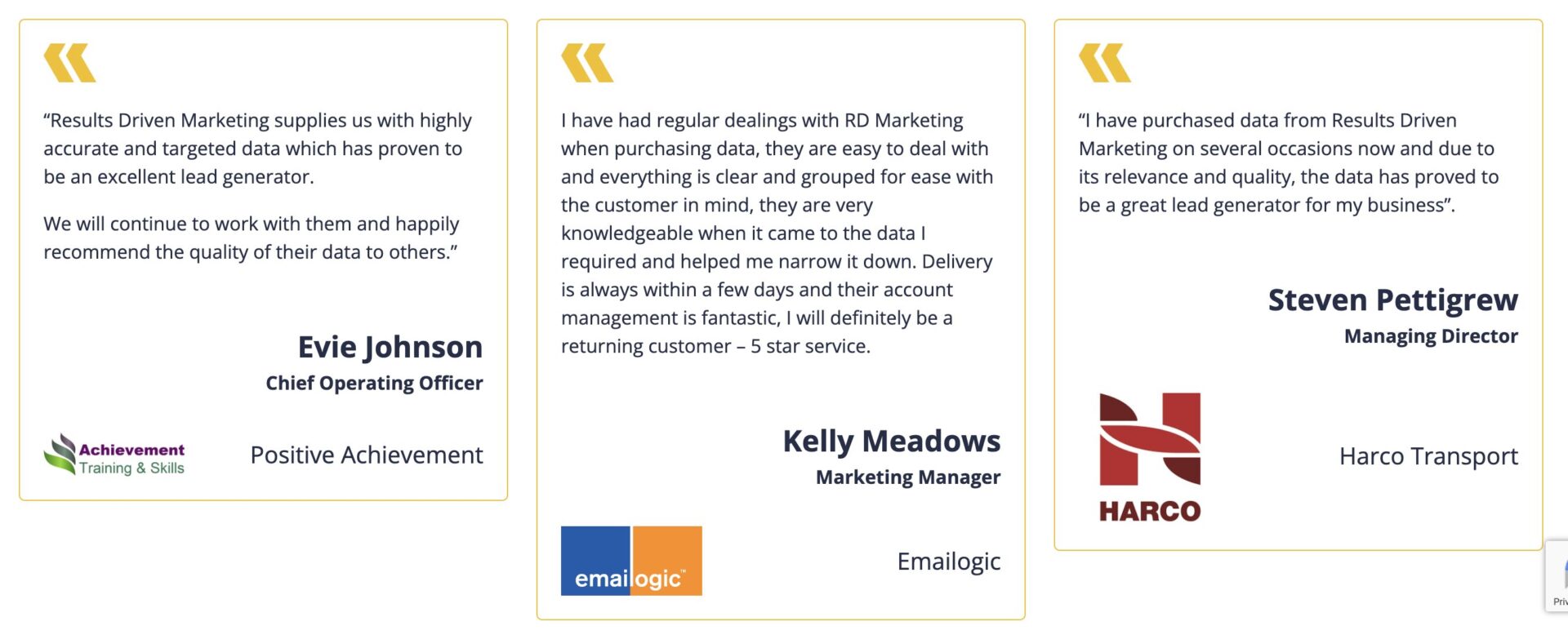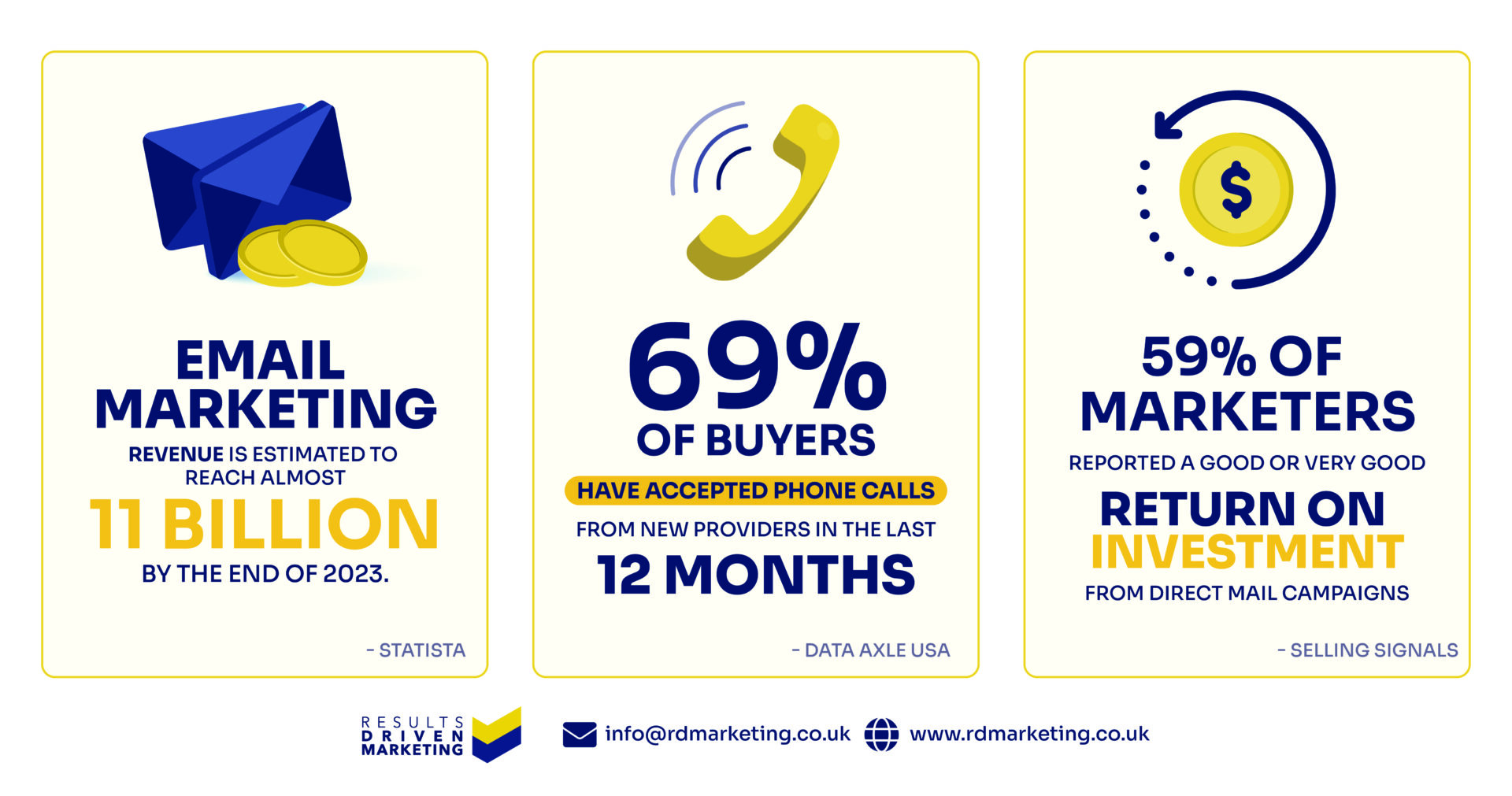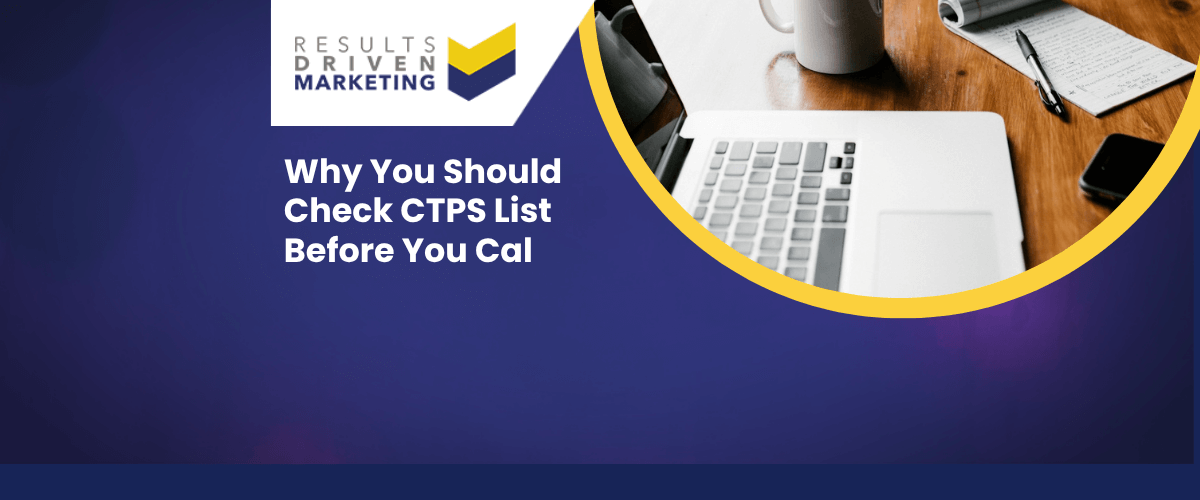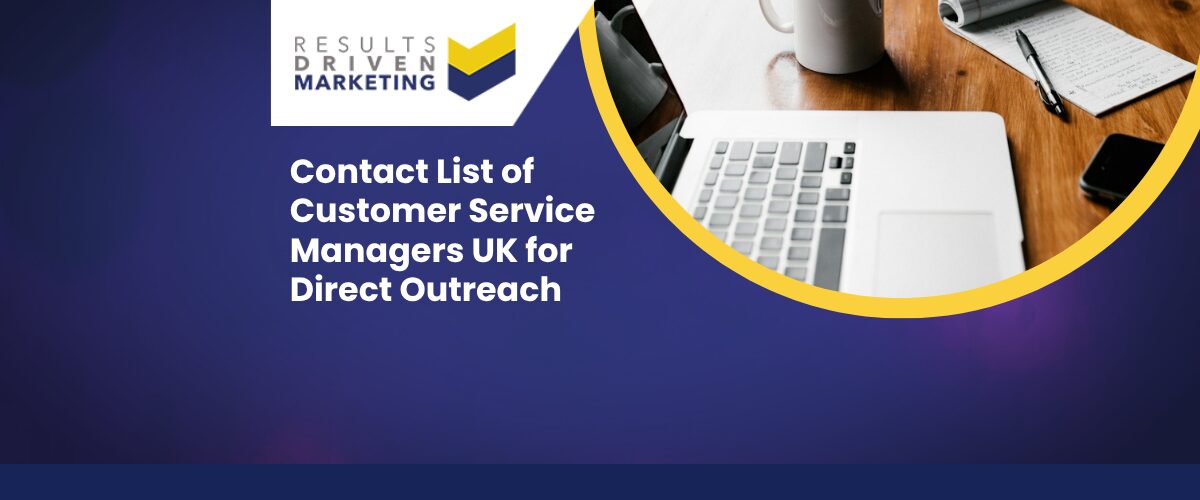
Marketing Email Lists to Reach Decision-Makers
Marketing email lists are one of the most effective tools for connecting directly with your ideal audience, driving engagement, and boosting sales. Whether you’re a small business looking to grow or an established company refining your outreach, understanding how to leverage marketing email lists can transform your campaigns.
In this article, we’ll dive into everything you need to know about marketing email lists—what they are, why they’re essential, and how to use them effectively. You’ll discover practical tips on choosing the right list, maintaining its accuracy, and crafting personalised email campaigns that resonate with your audience.
We’ll also introduce you to our expertly curated marketing email lists, designed to help businesses like yours reach decision-makers within UK SMEs. Whether you’re aiming to promote a new product, generate leads, or build long-lasting customer relationships, our tailored lists can help you achieve your goals.
Table of contents:
What Our Clients Say About Our Marketing Email Lists
Don’t just take our word for it—hear from businesses that have transformed their marketing efforts with our marketing email lists. Our clients consistently praise the quality of our data, the precision of our targeting, and the outstanding results they’ve achieved.
Here’s what some of them have to say:
For more glowing feedback, check out our full Testimonials Page.
Curious about the potential ROI for your campaigns? Use our ROI Calculator to see how our marketing email lists can drive measurable success for your business.
Take the next step toward marketing that works—join the businesses already benefiting from Results Driven Marketing’s expertly curated email lists!
How Other Businesses Are Leveraging Marketing with Email Lists to Their Benefit
Businesses across industries are achieving remarkable success by strategically marketing with email lists. This powerful approach allows them to connect with the right people, deliver personalized messages, and achieve their marketing goals efficiently. Here are some inspiring ways companies are putting email lists to work:
- Driving Targeted Campaigns: Businesses are using curated email lists to ensure their campaigns reach senior decision-makers who have the power to act. By targeting specific industries or regions, they’re maximising the relevance and impact of their outreach.
- Boosting Lead Generation: Companies leverage email lists to identify and nurture high-quality leads. With precise targeting and tailored messaging, they’re turning prospects into loyal customers more effectively.
- Promoting Events and Webinars: From workshops to industry conferences, event organizers are using email lists to send personalized invitations, ensuring their events attract engaged, high-value attendees.
- Launching New Products or Services: Businesses introducing something new rely on email lists to create buzz and excitement. By reaching their ideal audience directly, they’re able to generate interest and secure early adopters.
- Building Long-Term Relationships: Email marketing isn’t just about immediate sales—it’s about staying top of mind. Companies share valuable content, updates, and exclusive offers through email lists to foster loyalty and keep their audience engaged over time.
By marketing with email lists, businesses are creating opportunities to connect with decision-makers, strengthen relationships, and achieve measurable results. It’s a proven strategy that combines precision targeting with meaningful engagement to drive success in today’s competitive landscape.
Simplify Marketing with Email Lists Using Responder
If you’re ready to take charge of your email campaigns, our platform Responder is the perfect solution for marketing with email lists. Responder empowers businesses to run their own in-house email marketing campaigns to UK SMEs, combining flexibility with efficiency.
Here’s why Responder is a game-changer:
- Accepts All Email Lists: No matter where your email lists come from, Responder seamlessly integrates them, so you can hit the ground running without complications.
- Super Cost-Effective: Get all the features you need to create impactful campaigns at a fraction of the cost of other platforms.
- Easy to Use: Designed with simplicity in mind, Responder allows you to create, schedule, and analyze campaigns with minimal effort—even if you’re new to email marketing.
- Full Support Provided: Our expert team is always available to ensure your campaigns run smoothly, offering guidance and troubleshooting whenever needed.
Take control of your email marketing strategy with Responder, and see how easy and effective marketing with email lists can be.
Leave It to the Experts with Managed Email Marketing Campaigns
Prefer a hands-off approach? Our Managed Email Marketing Campaign Services are here to take the weight off your shoulders. Let our experts handle your campaigns from start to finish while you focus on growing your business.
Here’s what we offer:
- Custom HTML Email Design: Our team creates bespoke, professional email designs tailored to your brand and campaign objectives, ensuring your messages stand out in busy inboxes.
- Broadcast Execution: We’ll handle the entire process of sending your campaigns to your email lists, targeting senior decision-makers within UK SMEs for maximum impact.
- Optimised Performance: From testing to analysing results, we optimise every aspect of your campaign to deliver the best possible outcomes.
Whether you’re hands-on with Responder or choose our managed services, marketing with email lists has never been easier or more effective. Let us help you connect with the right audience, drive engagement, and achieve your business goals.
FAQs About Marketing Email Lists
If you’re considering using marketing email lists to grow your business, you probably have some questions. Below, we’ve answered the most common queries to help you understand how marketing email lists work and how they can benefit your business.
What is a marketing email list?
A marketing email list is a curated collection of email addresses and other contact details that businesses use to reach potential customers. These lists are designed to help companies connect with specific audiences, such as senior decision-makers in UK SMEs, to promote their products or services directly.
Who can benefit from using a marketing email list?
Marketing email lists are valuable for businesses of all sizes and industries, particularly those looking to:
- Generate high-quality leads
- Promote B2B products and services
- Launch new campaigns or offers
- Increase attendance at events or webinars
- Build long-term relationships with clients
Whether you’re a startup, an established business, or a marketing agency, email lists provide a cost-effective way to connect with your target audience.
Are marketing email lists GDPR-compliant?
Yes, reputable providers like Results Driven Marketing ensure that their email lists are fully GDPR-compliant. This means that all contact details are obtained legally, with proper consent, and are regularly updated to ensure compliance with data protection regulations.
Using a compliant list protects your business from legal risks while maintaining trust with your audience.
How do I know if a marketing email list is right for my business?
A marketing email list is a great fit for your business if:
- You have a clear understanding of your target audience (e.g., industry, company size, job roles).
- You want to reach decision-makers quickly and efficiently.
- You’re looking for a cost-effective way to boost your outreach.
- You need a scalable solution to support your sales and marketing goals.
If you’re unsure, our team at Results Driven Marketing can guide you in selecting the right list for your needs.
What types of information are included in a marketing email list?
In addition to email addresses, marketing email lists may include:
- Contact names
- Job titles or roles
- Company names
- Industry sectors
- Business locations
- Phone numbers (in some cases)
This detailed information allows you to create highly targeted campaigns that resonate with your audience.
How can I use a marketing email list effectively?
To get the most out of your marketing email list, follow these best practices:
- Segment Your Audience: Divide your list based on industries, locations, or job titles for more personalised messaging.
- Craft Engaging Emails: Use attention-grabbing subject lines, clear calls to action, and value-driven content.
- Test and Optimise: Experiment with different designs, copy, and timing to identify what works best for your audience.
- Follow Up: Don’t stop at one email. Use follow-ups to nurture leads and build relationships over time.
With a well-executed strategy, marketing email lists can deliver outstanding results.
Can I use my existing email list with your services?
Absolutely! If you already have an email list, you can use it with our Responder platform to manage your own campaigns, or we can integrate it into our Managed Email Marketing Campaign Services. We’ll even help clean and enhance your list to ensure it’s optimised for success.
What’s the difference between Responder and your managed services?
- Responder: This is our email marketing platform that allows you to run your own in-house campaigns. It’s cost-effective, easy to use, accepts all email lists, and comes with full support.
- Managed Services: Our team takes care of everything for you, from creating bespoke HTML email designs to sending broadcasts and optimizing performance. It’s a hands-off solution for businesses that want expert execution without the hassle.
Whether you prefer DIY control or expert management, we’ve got you covered.
How often should I send emails to my marketing email list?
The frequency of your emails depends on your goals and audience preferences. As a general rule:
- Weekly or bi-weekly: Ideal for keeping your audience engaged without overwhelming them.
- Monthly: Great for newsletters or regular updates.
- Campaign-specific: For promotions, events, or special offers, emails can be sent more frequently over a short period.
Consistency is key, but always monitor engagement metrics to ensure your frequency works for your audience.
How do I measure the success of my email campaigns?
Key metrics to track include:
- Open Rates: Percentage of recipients who open your email.
- Click-Through Rates (CTR): Percentage of recipients who click on links within your email.
- Conversion Rates: Percentage of recipients who complete a desired action, such as filling out a form or making a purchase.
- Bounce Rates: Percentage of emails that weren’t delivered successfully.
- Unsubscribe Rates: Percentage of recipients who opt out of your emails.
Our tools and services include performance tracking to help you analyse and optimise your campaigns.
Why should I choose Results Driven Marketing for my marketing email list needs?
At Results Driven Marketing, we:
- Provide GDPR-compliant, high-quality email lists tailored to UK SMEs.
- Offer a powerful email marketing platform (Responder) and expert-managed services.
- Deliver exceptional support to help you maximise your campaigns.
- Focus on driving real, measurable results for your business.
Learn more about how we can help by exploring our Testimonials Page and calculating your potential success with our ROI Calculator.
How can I get started?
Getting started is easy! Contact us today to discuss your needs, and we’ll help you choose the right marketing email list or service to achieve your goals. Whether you want to run your own campaigns with Responder or let us manage everything for you, we’re here to support your success.
Marketing email lists are a proven way to reach decision-makers, generate leads, and grow your business. Let us help you unlock their full potential!
How to Build Effective Marketing Email Lists
Creating high-performing marketing email lists is essential for the success of your email campaigns. A well-built list allows you to connect with the right audience, personalise your messaging, and drive higher engagement. Here’s a step-by-step guide to building an email list that delivers results.
1. Identify Your Target Audience
Before you start building your marketing email lists, take the time to define your target audience. Consider factors like:
- Industry or niche.
- Job roles or decision-makers you want to reach.
- Geographic location or specific regions.
By having a clear picture of your ideal audience, you can focus on attracting contacts who are genuinely interested in your products or services.
2. Use Lead Magnets to Attract Subscribers
Lead magnets are valuable resources or incentives offered in exchange for a prospect’s email address. Examples include:
- E-books or Whitepapers: Share insights or solutions to common challenges in your industry.
- Free Trials or Discounts: Encourage potential customers to engage with your product or service.
- Exclusive Content: Offer access to webinars, templates, or tools that are relevant to your audience.
Make sure your lead magnet is directly tied to your audience’s needs and adds real value.
3. Optimise Your Website for Email Sign-Ups
Your website is a powerful tool for growing your marketing email lists. To maximise its potential:
- Add Sign-Up Forms: Place forms in prominent locations, such as the homepage, blog posts, or contact pages.
- Use Pop-Ups Strategically: Display pop-ups at the right time, like when a visitor has spent a few seconds on your site.
- Create Dedicated Landing Pages: Build pages specifically designed to capture email sign-ups with clear CTAs and benefits.
4. Leverage Social Media to Expand Your Reach
Social media platforms are excellent channels for growing your marketing email lists. Use these tactics:
- Promote your lead magnets with targeted ads.
- Share sign-up forms directly in your posts or stories.
- Host giveaways or contests that require email sign-up for participation.
5. Network and Collect Emails at Events
Whether you’re attending trade shows, webinars, or conferences, events are great opportunities to grow your marketing email lists.
- Offer attendees an incentive to join your list, such as exclusive content or follow-up resources.
- Use QR codes or tablets to collect email addresses easily and digitally.
6. Ensure Compliance and Ethical Practices
Building your marketing email lists ethically is critical for maintaining trust and avoiding legal issues.
- Obtain Explicit Consent: Always ask permission before adding someone to your list.
- Stay GDPR-Compliant: Follow regulations by providing clear opt-in options and privacy disclosures.
- Include Easy Opt-Out Options: Allow subscribers to unsubscribe effortlessly, which also helps maintain a clean list.
7. Keep Your Email List Clean and Updated
An outdated list can harm your email campaigns. To ensure your marketing email lists remain effective:
- Remove invalid or inactive email addresses.
- Segment your list based on engagement or other criteria.
- Regularly verify the accuracy of your contacts.
By focusing on these steps, you can build marketing email lists that not only grow your audience but also drive meaningful engagement and results for your campaigns. Remember, the quality of your list matters more than the quantity—targeting the right people is the key to success.
Purchase Targeted And High-Quality Marketing Email Lists
Use database service providers to select and deliver high-quality lists of prospects that you can send your marketing communications to.
Cost Savings
Buying high-quality email lists can help you save money by eliminating the need to create your own email lists from scratch.
By using a well-vetted marketing email list, you can target an audience with a high intent to purchase and a greater likelihood of converting.
Time Savings
Purchasing a high-quality email list will save you time on researching, collecting and organising contact information.
You can trust that you are getting a large number of up-to-date contacts that meet the requirements for marketing.
Increased Reach
If you want to reach a larger audience than what you are currently targeting, investing in an email list with a higher quality data is the way to go.
Properly targeted email lists can help you capitalise on leads with higher open and click-through rates.
Increased Performance
Having high-quality data leads to higher performance.
Low-quality lists can have outdated information or false contacts that can lead to decreased engagement and leads.
Investing in email lists with updated, compliant data will help ensure your success.
Improved Quality
High-quality lists can provide you with better insights into your target audience.
This will enable you to gain a better understanding of who your customers are and what their needs may be, leading to better campaigns and improved conversion rates.
How to Maintain High-Quality Marketing Email Lists
Building marketing email lists is just the beginning. To maximise the effectiveness of your email campaigns and maintain strong engagement, it’s essential to keep your lists accurate, clean, and up-to-date. Neglecting list maintenance can lead to high bounce rates, low engagement, and even compliance risks. Here’s how to keep your marketing email lists in top shape.
1. Regularly Cleanse Your Email List
Over time, email addresses can become invalid due to job changes, inactive accounts, or typos. Regular list cleansing ensures you’re targeting active and relevant contacts.
- Remove undeliverable or bounced email addresses.
- Identify and remove inactive subscribers who haven’t engaged with your emails over a set period.
- Use email verification tools to validate the accuracy of your contacts.
2. Segment Your List for Better Targeting
Segmentation is a powerful way to personalise your email campaigns and improve results. Break down your marketing email lists into smaller, more focused groups based on factors like:
- Demographics (e.g., location, age, or industry).
- Purchase history or engagement levels.
- Interests or preferences collected during sign-up.
By sending targeted messages to each segment, you’ll increase relevance and engagement.
3. Keep Your Data Updated
Outdated information reduces the effectiveness of your campaigns. Regularly update your marketing email lists to ensure they reflect the most current data.
- Send re-engagement campaigns to confirm interest and update subscriber preferences.
- Encourage users to update their contact information through easy-to-use forms.
- Use CRM tools to synchronise and manage data efficiently.
4. Monitor Engagement Metrics
Monitoring the performance of your email campaigns is essential for identifying trends and potential issues in your marketing email lists. Pay attention to:
- Open rates and click-through rates: Low engagement could indicate irrelevant content or poor targeting.
- Unsubscribe rates: A spike in opt-outs might signal over-emailing or mismatched expectations.
- Bounce rates: High bounce rates may suggest your list needs cleaning or verification.
5. Stay GDPR-Compliant
Compliance is key to maintaining trust and avoiding legal trouble. Ensure your marketing email lists follow GDPR or other relevant regulations by:
- Collecting email addresses with explicit consent.
- Providing clear opt-out options in every email.
- Regularly reviewing your data collection and storage practices to stay compliant.
6. Nurture Your List with Value
Engaged subscribers are more likely to remain active on your list. Keep your audience interested by consistently delivering value through your emails.
- Share exclusive content, such as industry insights, guides, or offers.
- Use surveys or feedback forms to understand what your subscribers want.
- Personalise your emails based on past interactions or preferences.
7. Avoid Overloading Your Subscribers
While regular communication is important, overloading your marketing email lists with too many emails can lead to unsubscribes or spam complaints.
- Find a balance in your email frequency—start with 1-2 emails per week and adjust based on engagement.
- Use analytics to identify the best days and times to send your campaigns.
By maintaining your marketing email lists with these best practices, you’ll improve deliverability, increase engagement, and maximise the impact of your email marketing campaigns. Remember, a well-maintained list isn’t just a tool for outreach—it’s a valuable asset for building meaningful relationships with your audience.
How to Segment Marketing Email Lists for Maximum Results
Segmentation is one of the most effective ways to boost the performance of your email campaigns. By dividing your marketing email lists into smaller, targeted groups, you can deliver highly relevant content that resonates with each segment, leading to better engagement and results. Here’s how to effectively segment your lists for maximum impact.
Why Segmenting Marketing Email Lists Matters
Not all subscribers are the same—they have different needs, preferences, and behaviors. Segmentation allows you to:
- Tailor your messaging to match specific interests.
- Improve open rates and click-through rates by delivering relevant content.
- Build stronger relationships with your audience by addressing their unique challenges.
Key Ways to Segment Your Marketing Email Lists
- Demographics
- Segment based on attributes like age, gender, location, or job role.
- Example: A B2B company might send different emails to HR managers versus IT directors.
- Behavior
- Group subscribers based on their interactions with your emails or website.
- Example: Create a segment for subscribers who have clicked on a particular product link.
- Purchase History
- For e-commerce or B2B businesses, segment customers based on their buying habits.
- Example: Send targeted promotions to customers who haven’t purchased in the last six months.
- Engagement Levels
- Identify active, inactive, or high-value subscribers.
- Example: Reward loyal subscribers with exclusive offers, while sending re-engagement campaigns to inactive users.
- Sign-Up Source
- Tailor messaging based on how subscribers joined your list (e.g., via a lead magnet, webinar, or event).
- Example: Webinar attendees may appreciate follow-ups with related content or resources.
- Preferences
- Allow subscribers to indicate their interests when signing up and use that data for segmentation.
- Example: Let subscribers choose between receiving product updates, industry news, or special offers.
Tips for Effective Segmentation
- Start Simple: Begin with basic segmentation, such as demographics or engagement, and gradually refine as you gather more data.
- Combine Segments: Use multiple criteria to create highly targeted segments (e.g., location + behavior).
- Test and Learn: Run A/B tests within segments to identify which messages resonate best.
- Keep It Fresh: Update segments regularly to reflect changes in your subscribers’ behaviors or preferences.
Benefits of Segmented Marketing Email Lists
When you take the time to segment your marketing email lists, you’ll enjoy several benefits, including:
- Higher open and click-through rates due to more relevant content.
- Improved customer satisfaction and loyalty.
- Better ROI, as targeted campaigns are more likely to convert.
Segmentation isn’t just a strategy; it’s an essential step in building personalised, impactful email marketing campaigns. By understanding your audience and tailoring your messaging, you’ll create emails that not only get noticed but drive meaningful results.
Ready to take your marketing email lists to the next level? Start segmenting today!







